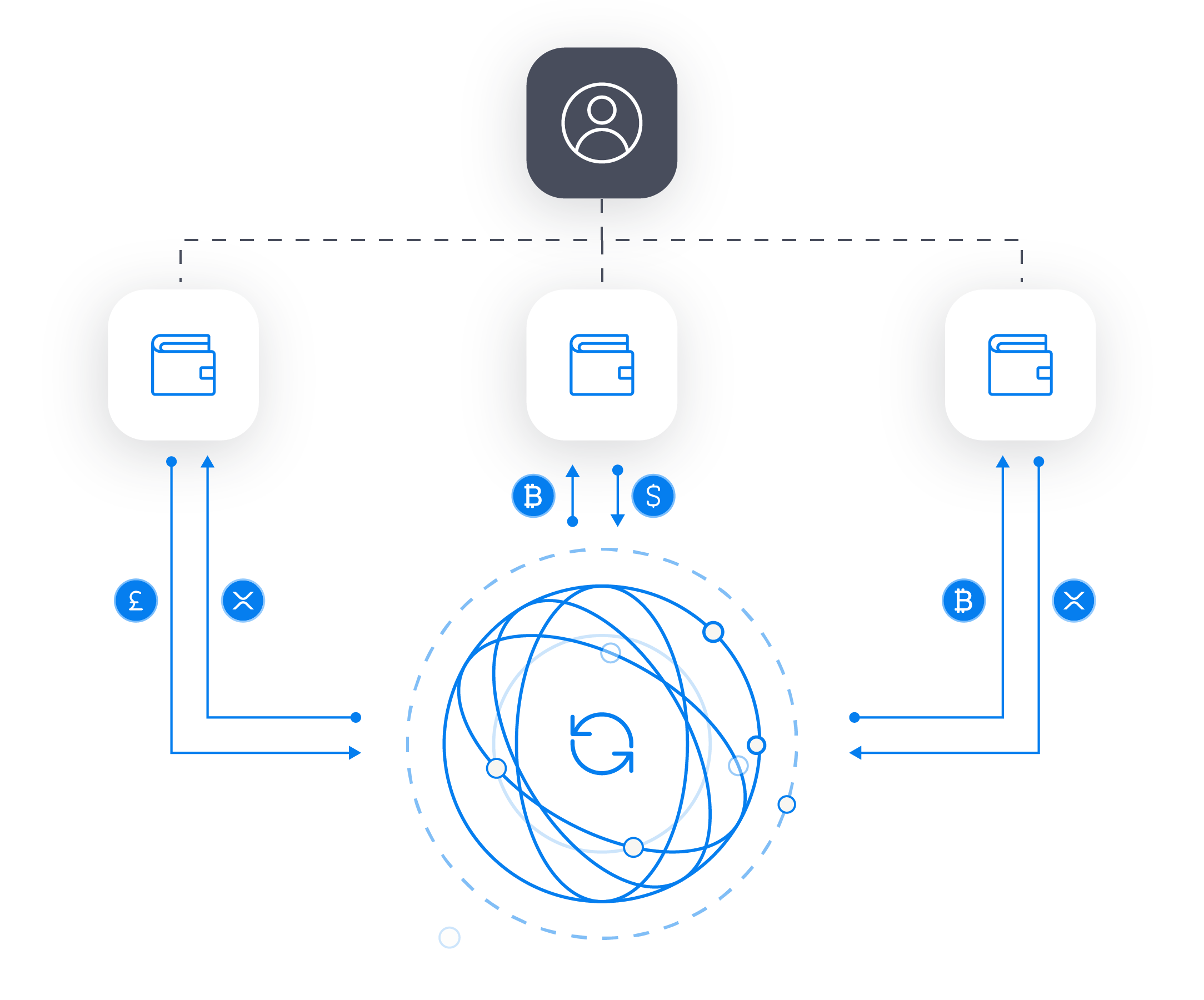The cryptocurrency industry is exceptionally diverse when it comes to services that are offered and to the terms used to describe them. In this article we cover the very basic difference between accounts, wallets and exchanges. We will also cover some subtypes of each of the three.
At GateHub we use all these terms at different levels on our platform which we will also explain in some detail here.
Account
Perhaps accounts and wallets get confused most often among these three terms. In the realm of blockchain an account and wallet can sometimes be used interchangeably.
By definition, an account is a record in an accounting system that tracks the financial activities of a specific asset, liability, equity, revenue, or expense.
This means that in cryptocurrency, an account is the most accurate name for a public/private keypair that can create transactions. In blockchain these keypairs exist even if they have not been generated (discovered) yet, and all you need to do is generate and then send some funds to a public address to start using the account.
In banking an account is used to operate FIAT money and most often, in order to hold more than one FIAT currency, separate accounts need to be created. Generally speaking an account in banking and in blockchain is a ledger entity that can hold assets.
This generalization holds true for most systems with some well known exceptions. The XRP Ledger, for instance, allows accounts to hold XRP and various IOUs, which is why, at GateHub we call XRPL accounts wallets. The Ethereum network also allows a similar setup where one account (or address) can hold multiple assets (tokens) next to ETH.
At GateHub, we use the term account for an entity in our system that allows a user to operate their identity, settings and wallets. In practical terms, when you log in to GateHub, you are logging in to your account which is associated with one or more wallets.
Wallet
We talked about Cryptocurrecny wallets in the past. We covered the differences between hot and cold wallets, private and public keys and wallet types.
In brief, a wallet can be a device, application or service which is most often tied to a specific user and allows for handling multiple assets. This can be achieved in multiple ways.
On GateHub you can use a Hosted wallet which allows you to use funds on a private ledger while the actual funds are stored in custodial wallets owned by GateHub. An XRPL wallet on the other hand is a public account and GateHub offers you the ability to use a public/private key pair to make transactions with this account. GateHub is an online wallet service that can be accessed from multiple devices.
The wallets on GateHub are called that due to their multi-currency abilities which, for us, differentiates them from accounts in a more traditional sense.
Other types of wallets like desktop wallet apps and hardware wallets are most often used to securely store your private keys for different networks in one place. This allows users to handle multiple assets and initiate on-chain transactions on multiple networks which warrants the name “wallet”.
Paper wallets are specific here as they are called a wallet but in most cases a paper wallet is a printed version of the public/private keypair that we mentioned above.
To recap, a wallet (in most cases) is software that allows you to hold and manage multiple assets in one interface. A good recap of wallet types (and other blockchain related information) can be found here.
Exchange
Most often, an exchange is a service that offers some method of adding funds (like USD, EUR or BTC) and then exchanging them for other assets. More often than not, exchanges also allow for sending any of their supported assets or at the very least withdrawing FIAT funds after some trades have been made.
In our previous blog we talked about cryptocurrency exchanges in detail. We covered how they work and the difference between a centralized and decentralized exchange.
For the purpose of this article it’s enough to say that most traditional exchanges use custodial accounts to hold their user’s funds and then provide IOUs on an internal ledger to allow for trading and exchanging funds. All these trades are made off-chain and no actual money is transferred as a result of these trades. Only the ownership of IOUs changes during these trades and users can then request to send their funds to their accounts on-chain (for example BTC blockchain or SEPA).
GateHub operates a wallet service which offers both custodial (Hosted) wallets and on-chain (XRPL) wallets. On GateHub, an exchange is an atomic swap of funds either over the XRPL or over the GateHub Hosted network.
Trading with your XRPL wallet is done via XRPL’s decentralized exchange feature. Find out how you can use your native XRPL wallet here.
Conclusion
On GateHub, an account gives you access to multiple multi-currency wallets which in turn allow you to make atomic swaps of funds via the exchange feature.

Like we mentioned at the beginning of this post the diverse solutions in the industry make it difficult to accurately define terms. This was a glimpse into the concepts that we use daily to build our services.
Sign up for GateHub
At GateHub, you can use a public XRP Ledger Wallet where you own the private key, or opt for a Hosted Wallet that is stored on a non-public ledger operated by GateHub.
Get Started!